Evaporated milk is a dairy product crafted by eliminating approximately 60% of the water content from fresh milk. What remains is a rich and creamy liquid characterized by a mildly caramelized flavor resulting from the heating procedure. It is commonly used in sweet and savory dishes as a versatile ingredient in recipes such as creamy soups, custards, puddings, and coffee creamer. Its concentrated form makes it a valuable addition to various culinary applications, offering a rich and creamy texture without refrigeration.
However, what should you do when you discover that you're preparing a recipe, only to realize that a vital ingredient, such as evaporated milk, is missing from your pantry? Fear not. In this post, we will share the best-evaporated milk substitutes for evaporated milk rescue and how much-evaporated milk substitute you should use in your recipe. In addition, we will share how to make your own evaporated milk at home if you don't want to opt for any evaporated milk substitutes.
What is Evaporated Milk
Evaporated milk is concentrated milk from which about 60% of water has been removed. It's creamier and richer than regular milk, with a slightly caramelized flavor due to the heating process. This gives it a distinct taste that's both sweet and rich. Canned evaporated milk is often used in sweet and savory dishes, including desserts like pumpkin pie and beverages such as coffee and tea, as well as in sauces and casseroles where a creamy texture is desired without adding fresh cream.
The 11 Best Evaporated Milk Substitutes
Regular Milk And Cream
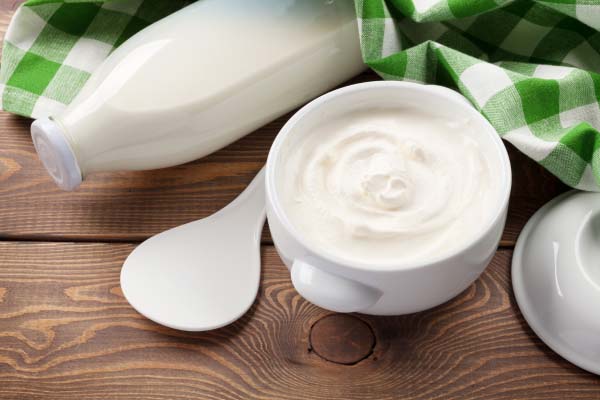
Regular milk and cream are a fantastic combination that is an ideal substitute for evaporated milk in various recipes. The beauty of using cow's milk and cream as an evaporated milk substitute is that it's a readily available and cost-effective option.
To make this alternative, combine whole milk and heavy cream in equal proportions. This mixture mimics the creamy consistency and richness of evaporated milk without much effort.
When to use this substitute? This combination works well in recipes that require evaporated milk's smooth and creamy texture, such as creamy soups, sauces, and baked goods like pies and custards. It's versatile and can be used as a one-to-one replacement for evaporated milk in most recipes.
Half-And-Half
A blend of equal parts whole milk and light cream, known as half milk and half cream, is an excellent replacement for evaporated milk in various culinary uses. With its versatile application in recipes, this substitute offers a creamy texture and mild flavor.
To use half-and-half as a substitute, you can typically replace evaporated milk with an equal amount. For example, if a recipe calls for 1 cup of evaporated milk, you can use 1 cup of half-and-half instead.
Half-and-half works well in recipes with a creamy consistency, such as in creamy soups, sauces, and certain desserts. Its moderate fat content gives dishes a smooth and rich texture without being overly heavy.
Powdered Milk
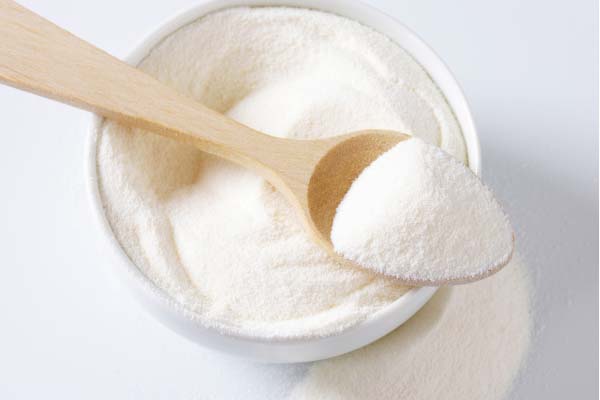
Powdered milk is a practical and versatile alternative to evaporated milk in cooking and baking. It's essentially milk with moisture removed, leaving behind a dry, powdered form. One of the key advantages of powdered milk is its long shelf life, making it a pantry staple that's readily available when you need it. It's a cost-effective choice, as a small amount of powdered milk can be reconstituted to make the equivalent of a larger volume of liquid milk.
To mimic the consistency of evaporated milk, mix the powdered milk with half the water you would normally use. For example, if the powdered milk package instructions recommend mixing 1 part of powdered milk with 4 parts of water to reconstitute it for regular milk, use 2 parts of water instead. Once you've prepared a thicker milk version, you can use it in a 1:1 ratio.
Powdered milk is frequently used in various recipes, including baked goods, soups, and sauces. It imparts a creamy texture and contributes a subtle dairy flavor as canned evaporated milk. Its versatility and convenience make it an excellent option for those looking to substitute evaporated milk in a pinch or as a pantry staple for everyday cooking.
Coconut Milk
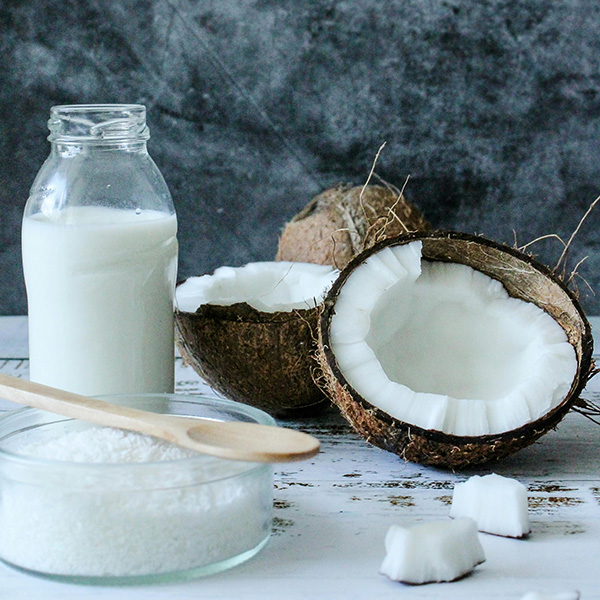
Coconut milk is a delightful, dairy-free substitute for evaporated milk, introducing a tropical twist to your recipes. Its lush and velvety consistency elevates the appeal of both sweet and savory recipes. It imparts a subtle coconut flavor that works wonderfully in dishes like curries, desserts, and creamy soups. It is especially well-received in culinary traditions from tropical regions and Asia.
You can substitute evaporated milk for coconut milk in your dishes. For example, if your recipe calls for 1 cup of evaporated milk, you can use 1 cup of coconut milk as a direct replacement.
Coconut milk is a tasty selection and an appropriate alternative for individuals experiencing lactose intolerance or dairy allergies. However, its distinct coconut taste may not be suitable for all recipes, so it's essential to consider the flavor profile of your dish when opting for coconut milk as a substitute.
Soy Milk
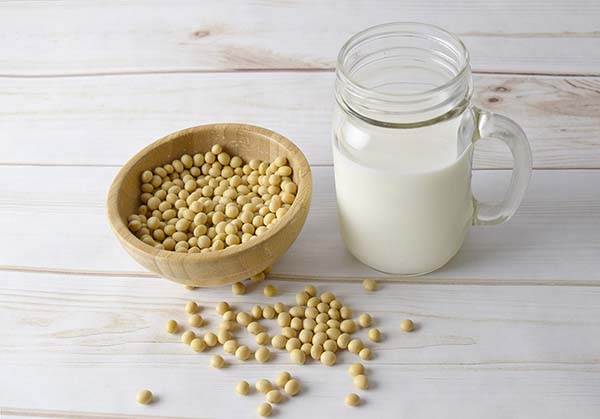
Soy milk offers a versatile, plant-based substitute for evaporated milk, making it a superb option for dairy-free alternatives. Soy milk boasts a notable advantage with its neutral flavor profile, ensuring it doesn't overshadow the taste of your culinary creations. This quality makes it well-suited for many recipes, spanning from sweet to savory, including creamy soups, sauces, baked goods, and desserts. Additionally, soy milk is a protein-rich option that provides essential nutrients, rendering it a nutritious selection for individuals adhering to a vegan or lactose-free diet.
To substitute evaporated milk with soy milk, simply use an equivalent amount in your recipes. However, because soy milk is thinner and less creamy than evaporated milk, you can simmer it over low heat, reducing it until it thickens and becomes creamier. Alternatively, adding a teaspoon of oil per cup of soy milk can help enhance the fat content, making it closer to evaporated milk's creaminess.
Nut Milk
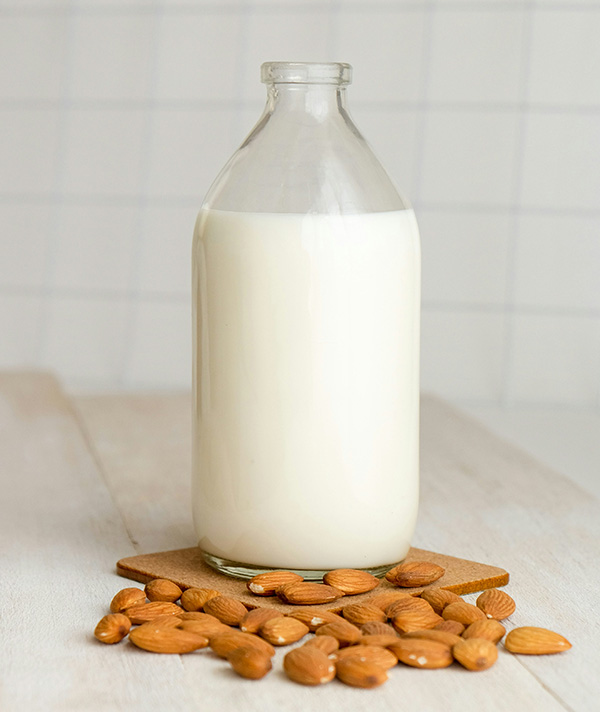
Nut milk, like almond or cashew milk, is a superb replacement for evaporated milk, particularly for dairy-free individuals. With its naturally creamy consistency, nut milk closely mirrors the texture of evaporated milk, making it suitable for a wide range of recipes, including creamy soups, sauces, and desserts.
When substituting nut milk for evaporated milk, it's a simple one-to-one ratio: Substitute one cup of evaporated milk with equivalent nut milk in your recipe. Depending on the nut milk type and brand, some can have a much thinner consistency than evaporated milk. If it's store-bought nut milk, read the ingredient list to see if it contains any added sugar or flavoring agents like vanilla extract, as these factors can affect your recipe. Making your own nut milk at home is much easier than you think and gives you a lot more control regarding taste and consistency.
To mimic the thickness and richness of evaporated milk, you can gently simmer it on the stovetop until it matches the consistency of evaporated milk. Alternatively, you can add thickeners like cornstarch or arrowroot powder to achieve a creamier texture. A good starting point is to mix 1-2 teaspoons of thickener with a small amount of cold nut milk to create a slurry, then blend this into the rest of the nut milk and heat until it thickens.
Oat Milk
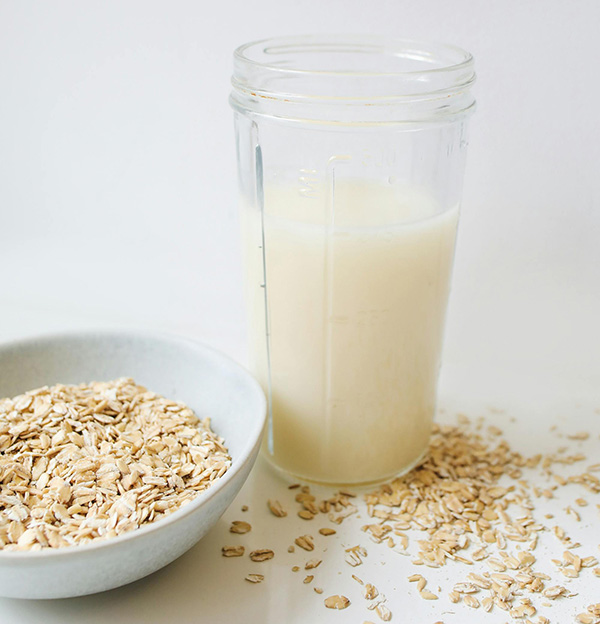
Oat milk is a notable alternative to evaporated milk, distinguished by its creamy texture and mild, slightly sweet flavor. This plant-based alternative, derived from whole oat grains, mirrors the consistency of evaporated milk, making it a suitable option for both cooking and baking. Its adaptability spans a range of recipes, encompassing both savory dishes and sweet desserts, providing a dairy-free solution for individuals with lactose intolerance or adhering to vegan dietary preferences.
The substitution ratio is simple. Replace evaporated milk with an equal amount of oat milk in your recipe. This one-to-one substitution ensures that the texture and consistency of your recipes remain consistent. Unlike nut milk and coconut milk, oat milk's neutral taste ensures it doesn't overpower the other flavors in your dish, maintaining the desired taste profile. Its low-fat content and absence of cholesterol also make it a healthier choice, adding nutritional value without compromising taste or texture.
Cashew Cream
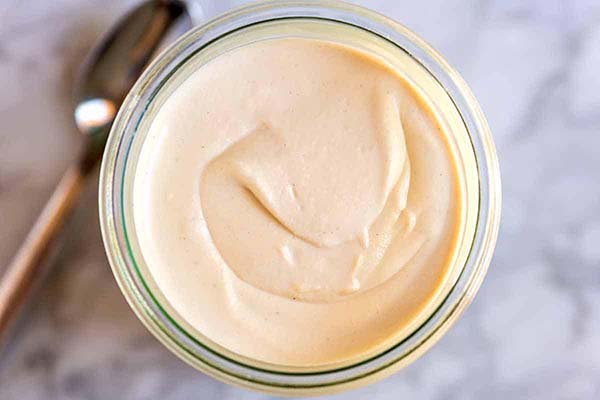
Cashew cream is a luxuriously rich and creamy alternative to evaporated milk, making it an outstanding selection for those searching for a dairy-free option. What sets cashew cream apart is its luxurious texture and neutral flavor profile. Cashews, when blended with water, create a smooth and velvety cream that closely resembles the thickness of evaporated milk. This creamy quality renders it a versatile ingredient that enhances the texture and flavor of sweet and savory dishes.
To replace evaporated milk with cashew cream, simply use an equivalent amount in your recipes. If the cashew cream is too thick for your recipe needs, you can add water until it reaches the desired consistency.
Cashew cream is a versatile ingredient that can be incorporated into various recipes, including soups, sauces, curries, and desserts. It imparts a subtle, nutty undertone to dishes without overpowering the flavors. Use the unsweetened and unflavored variety for optimal results when using cashew cream as a substitute.
Yogurt

Yogurt is a versatile and nutritious alternative to evaporated milk in a variety of recipes. You can use an equal amount of plain yogurt in place of evaporated milk in your cooking and baking endeavors.
Its creamy texture and slightly tangy flavor profile make yogurt an excellent alternative. Plain yogurt, in particular, closely mimics the thickness of evaporated milk, making it suitable for recipes where creaminess is key. It is an excellent choice for sweet and savory dishes, including soups, stews, sauces, and desserts.
When using yogurt as a substitute, opt for unsweetened and unflavored varieties to maintain the neutrality of the flavor. Yogurt adds creaminess and provides a dose of probiotics, which can benefit gut health.
Buttermilk
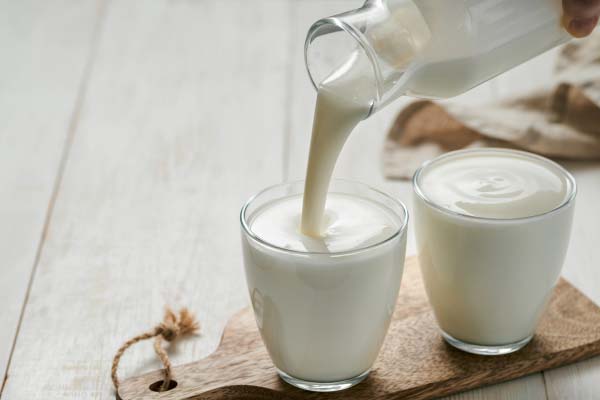
Buttermilk is an excellent substitute for evaporated milk, offering a unique flavor and creamy texture that works well in various culinary applications. To substitute evaporated milk with buttermilk, employ an equal amount of buttermilk in your recipe.
Its tangy taste sets buttermilk apart, adding a delightful zing to sweet and savory dishes. It's particularly popular in baking, contributing to tender and moist cakes, muffins, and pancakes. The acidity of buttermilk also makes it a suitable choice for marinades, salad dressings, and creamy soups.
Rice Milk
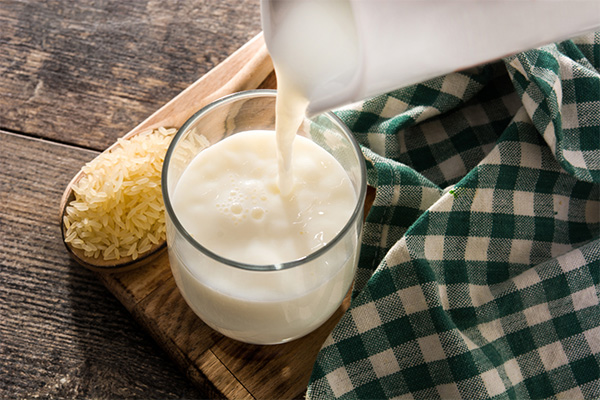
Rice milk can substitute for evaporated milk in many recipes. It is one of the best-evaporated milk substitutes for individuals with dietary restrictions. Rice milk offers a lighter, nut-free, dairy-free alternative. It's particularly effective in dishes where the rich flavor of evaporated milk isn't pivotal.
To substitute, use an equal amount of rice milk, though you might consider reducing the rice milk slightly or adding a thickener for a thicker consistency. It's best used in baking and cooking where its subtle sweetness and lighter texture can blend well, such as in smoothies, desserts, and light sauces.
However, it's important to note that rice milk is less fatty and protein-rich, which may affect the texture and richness of the final dish. Adjustments in recipes might be needed to achieve desired results. If you are considering using rice milk, I recommend that you simmer it to reduce water content so it can achieve a richness similar to evaporated milk.
How To Make Your Own Evaporated Milk
Ingredients
2 cups of whole milk (or any milk of your choice)
Instructions
- Start by measuring 2 cups of whole milk or the milk you choose. Whole milk is traditionally used for evaporated milk, but you can use low-fat or non-dairy milk if preferred.
- Heat the milk in a saucepan over medium-low heat. Use a heavy-bottomed saucepan to avoid scorching. Let the milk simmer gently.
- Allow the milk to simmer gently. Reduce it by approximately half, a process that typically takes around 25-30 minutes. Occasionally, stir the milk to prevent sticking and scorching.
- Once the milk has reduced by half and thickened slightly, remove it from the heat and let it cool to room temperature. It will further thicken as it cools.
- Pour the homemade evaporated milk into a clean, airtight container or jar. Place it in the fridge and store it for 5-7 days. Be sure to mark the container with the date for future reference.
What's The Difference Between Sweetened Condensed Milk And Evaporated Milk?
Sweetened condensed milk and evaporated milk all belong to the category of reduced milk, yet they exhibit distinct differences. Sweetened condensed milk is essentially fresh milk from which water has been extracted and subsequently sweetened with sugar (there is no such thing as unsweetened condensed milk), resulting in a thick and sweetened product.
In contrast, evaporated milk is produced by heating fresh milk to eliminate approximately 60% of its water content, creating a concentrated milk form without any added sugar. While evaporated milk has a slightly caramelized flavor, it's not inherently sweet like sweetened condensed milk.
